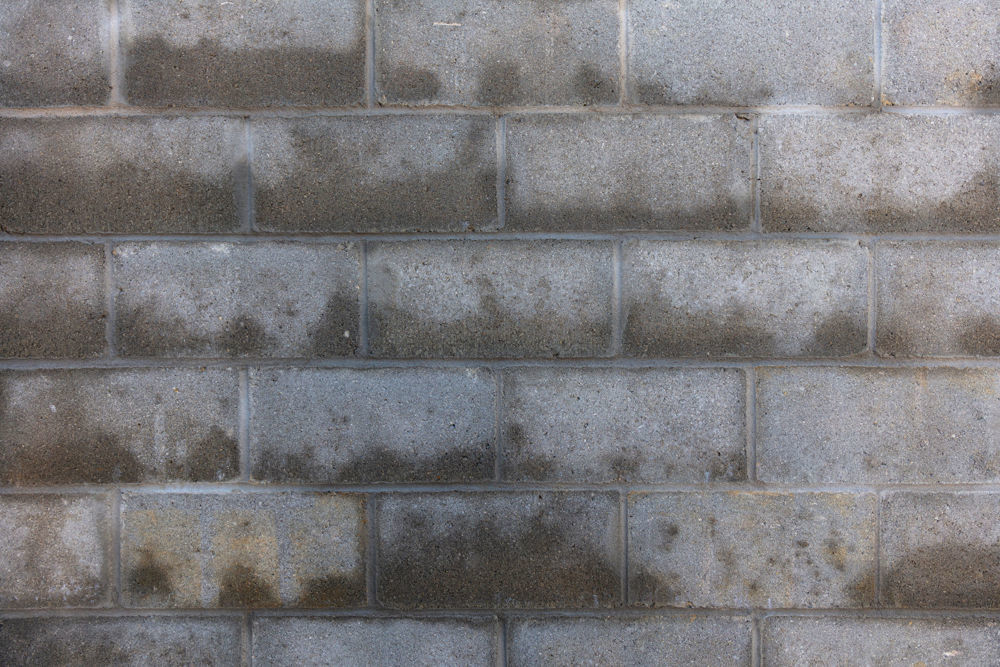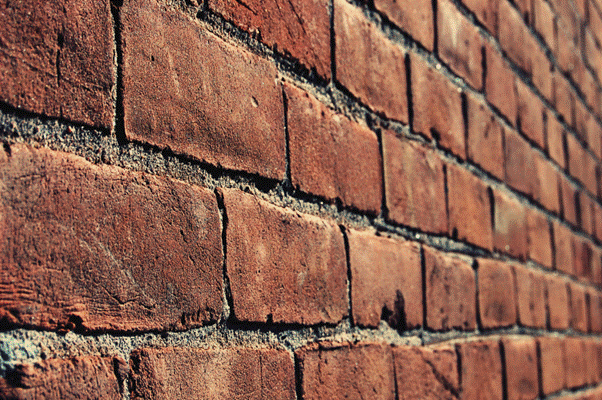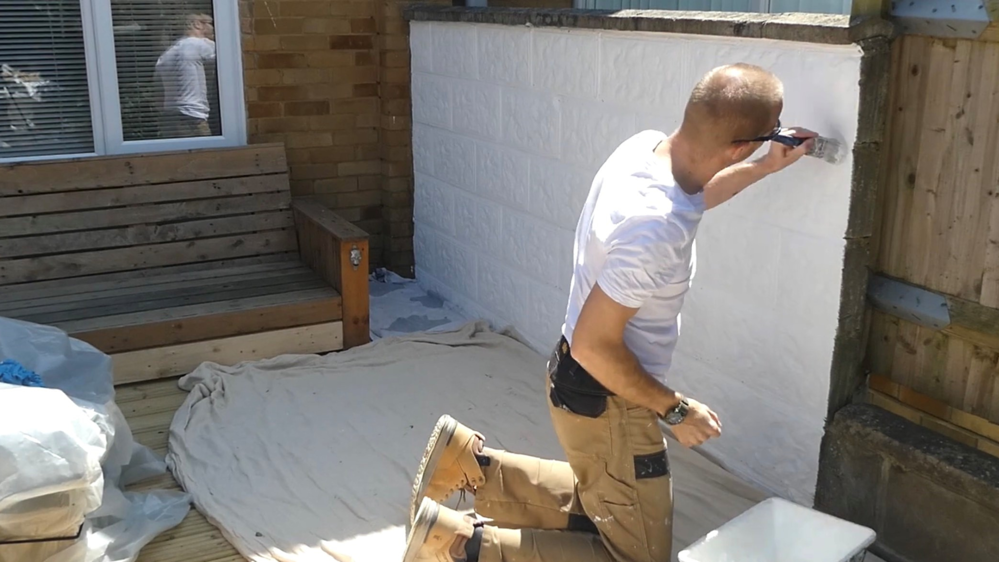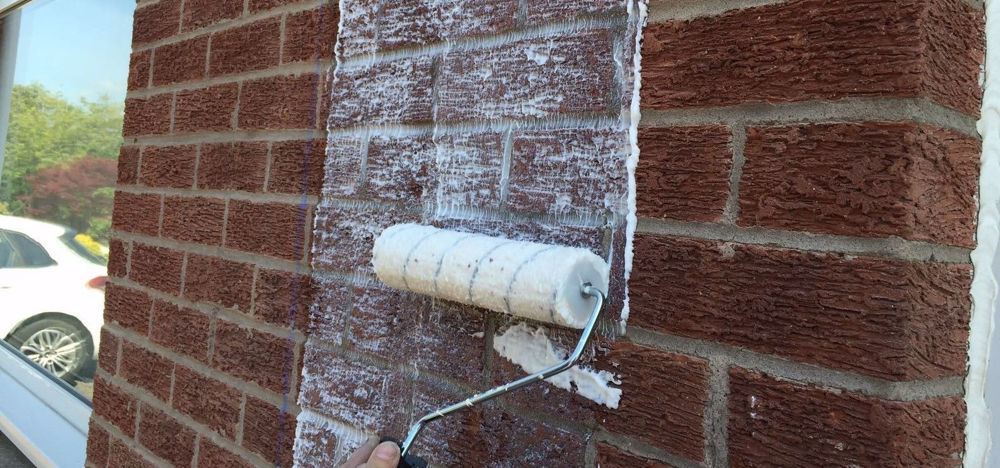
As a homeowner, one of the most alarming things that can happen is water coming through the walls of your home. Many of us do not know what the severity of the situation could be, what is causing the water and ultimately how to prevent it from happening. That is why in this guide, we are going to cover all of the vital information you need to know, plus exactly how to go about resolving it, so you can keep your home warm and dry.
Why Is Water Coming Through Walls?
When it comes to any problem associated with damp or moisture, there is never a clear-cut answer to all situations. The reality is, moisture can enter into a property in one of any number of ways, so it is crucial to do some investigating to try and establish what the source of the water is.
While older properties are particularly prone to damp problems, issues can occur with any property, contrary to popular belief.
The three ways that damp problems can be caused; condensation, rising damp & penetrating damp.
Condensation is an internal source of moisture, caused by poor ventilation and high humidity conditions that leads to black mould growth on interior walls. This will not be the cause of water seeping through walls, but if you are suffering from black mould especially in high-moisture rooms such as bathrooms, you will want to address this condensation. This can be addressed by using a thermal insulating paint that has anti-condensation properties. If you would like to read more about condensation, why not read our full guide to anti-condensation paint?
Rising Damp
Rising damp is one of the lesser-known forms of damp that our homes can experience in some cases. It is an external source of moisture that as the name would suggest, is caused when moisture rises up through the ground and into the bottom level of a property.
The moisture travels upwards through a process called 'capillary action', sucking the ground water up through the walls and gradually rising. This is a relatively rare form of damp due to the existence on almost all properties of a damp proof course (DPC), which creates a water-resistant barrier to prevent this transfer of moisture.
If a property is suffering from rising damp, this is a direct result of either there not being a DPC implemented or the current DPC failing and requiring repairs.
HOW TO IDENTIFY RISING DAMP
You can identify rising damp from the fact that it stems from the very bottom of the property and slowly rises up through the ground floor up to roughly the 1 metre mark. It is likely to cause weakened plaster, brickwork, rotting skirting boards and can also damage any interior wood such as floorboards.
HOW TO PREVENT RISING DAMP
Due to the technical nature of a DPC, if your property is suffering from rising damp we recommend that you seek advice from a damp proofing expert who will be able to implement or repair a DPC and prevent the soaking of moisture from the ground up into the walls of your property.

Penetrating Damp
The most common form of damp, penetrating damp is caused by water entering through the external wall of a property and into the internal environment.
Contrary to popular belief, exterior masonry walls, whether they are stone, concrete, brick or render are all porous. This means that they will absorb moisture over-time, especially during the winter months where heavy rainfall will saturate these mineral materials. The more porous the material, the more moisture it will absorb and hold in the surface.
This can also be the case with previously painted masonry surfaces, as many standard masonry paints are acrylic-based, meaning they can absorb moisture over-time. For this reason, many masonry paints refer to themselves as 'weatherproof' or 'weather resistant', as to be waterproof a masonry paint must be water repellent.
Aside from wind-driven rain hitting the external wall of a property, penetrating damp can also be caused as a result on leaking guttering and blocked drains, which can cause water to penetrate into the masonry.
New and old masonry surfaces can all be prone to damage due to water ingress. As the masonry naturally uptakes moisture, over-time this moisture can undergo what is known as a 'freeze-thaw cycle'. As temperatures drop, the moisture inside the masonry can expand when it freezes. This expansion causes movement within the masonry, eventually this causes small cracks to open-up. The cracks allow more moisture to enter the wall, which causes more movement and the cycle continues. High moisture levels can also lead to damaged or deteriorating mortar and spalling bricks, which can not only cause structural issues but will also worsen any damp problems.
HOW TO IDENTIFY PENETRATING DAMP
Unlike rising damp, penetrating damp can occur at any level of a building. If water is coming through your interior walls, it is important to check the adjoining exterior wall to see if there are any signs in that area of water ingress. The easiest way to identify penetrating damp is any wet patches on the exterior masonry surface which would indicate it is becoming saturated. Organic growth such as mildew, lichens and moss will all grow on saturated masonry, so if there is any green growth on the external wall this may indicate that penetrating damp is what is leading to water coming through interior walls. Lastly, any defects such as cracks, spalling bricks or leaking gutters in the area where you are suffering from the damp will give a clear indication of the source of moisture.

HOW TO PREVENT PENETRATING DAMP
If you have identified that penetrating damp is what causing water to come through the walls of your property, there are a number of steps that you can take yourself.
First, if there are any defects on your property, these must be repaired in order to help improve the building's resistance to weathering. Fixing any leaking or blocked gutters is going to ensure that water can travel off the structure of the building quickly and effectively without running down the walls. Furthermore, repairing any cracks in the masonry ensures moisture cannot easily enter the wall. This can be done using a good quality exterior filler such as Toupret Masonry Repair Filler.

When repairing surfaces it can often be difficult to disguise the repairs and marry them up with the existing surface. Emperor Textured Basecoat can create a range of finishes, allowing it to mask any repairs and create a seamless, blemish-free finish. Using either a light, medium or textured roller can help create any texture you require, plus the basecoat is highly breathable so you don't have to compromise the performance of the wall. Crucially, it can be done quickly and easily, preventing the need for costly and time-consuming rendering work.
Once any repairs are made to the property, the final part of preventing penetrating damp is to apply a protective paint to the exterior walls. By applying this to the masonry, you limit the water absorption that can lead to penetrating damp and help keep the property protected from damage.
Emperor Masonry Paint and Emperor Masonry Creme are super hydrophobic (ultra water-repellent) treatments that prevent 96% of water absorption on exterior walls such as brick, stone, concrete and render. In contrast to brick sealers, they remain highly breathable, ensuring that any water vapour that naturally builds up inside the property can escape, keeping the house warm & dry.
Emperor Masonry Paint offers a coloured finish, while Emperor Masonry Creme absorbs into bare masonry surfaces to offer completely invisible protection. This means that no matter whether you have painted exterior walls or bare brickwork, you can help prevent moisture from entering your property.
Both products thanks to their highly advanced nano-technology come with extremely high durability. In independent 25 year weathering tested conducted by a UKAS accredited laboratory, both products were found to have no change in performance or appearance in any way from when they were applied. For this reason, the treatments are likely to far exceed a 25 year lifespan, which is why they both come with a lifetime guarantee, ensuring their performance in any weather conditions.

How To Waterproof Exterior Walls
The application process of Emperor Masonry Creme and Emperor Masonry Paint varies, as one is a two-coat paint and the other is a one-coat cream. In both cases, we recommend using good quality tools in order to complete the project as easily and effectively as possible. We particularly recommend using a long-pile roller on masonry surfaces, as this will allow you to apply the treatments to semi-rough and rough surfaces.
PREPARATION
No matter which treatment you are using, it is crucial to prepare the surface properly before application. Any dirt or debris on the wall can not only leave you with a poor finish, but can also help prevent it from performing long-term.
Clean the masonry down first using a hose pipe, power-washer or a brush and hot water. This removes the dirt and grime from the wall, ensuring that there is nothing that will prevent the treatments adhering to the surface.
Once you have removed the surface level dirt, we recommend applying a fungicidal cleaner such as Emperor Exterior Cleaner. This will kill any fungal growth on the wall, which if left untreated could bloom underneath the paint film and cause discolouration. Simply apply the cleaner to the masonry and leave it to dry for 2 hours. If you are using Emperor Masonry Creme, wash this off using a hose pipe after the two hours, if you are using Emperor Masonry Paint you do not need to do this.
Finally, if you are planning to use Emperor Masonry Paint on bare, unpainted masonry or render, apply one-coat of Emperor Exterior Primer. A primer must always be applied to bare surfaces as it not only ensures the paint adheres to the surface, but also that the surface does not soak up the first coat of paint. You do not need to apply a primer when using Emperor Masonry Creme.
APPLICATION
The application method of the treatments will depend which you are using, however in any case ensure you are applying in dry conditions and to dry masonry.
Emperor Masonry Paint
If applying Emperor Masonry Paint, begin by applying the first coat to the edges of the wall, starting at the top and working your way down. Ensure you are applying the paint at 5-6m2 per litre on smooth & semi-rough surfaces or 3m2 on heavily textured surfaces such as pebbledash. You may wish to dilute your first coat of paint by 10% with water, which helps make applying the first coat easier.
Once your first coat has been applied, allow this to dry for 5-8 hours, depending on the temperatures. While the paint will be touch dry in 1-2 hours, it will continue to dry underneath the paint film so ensure you wait a sufficient time. After the first coat is fully dry, you can apply your second coat of paint to the surface.

Emperor Masonry Creme
Emperor Masonry Creme while it contains the same waterproofing technology as Emperor Masonry Paint, is very different to apply. In order to offer invisible protection, it soaks into the bare brickwork much in the same way a moisturiser would with skin. You simply apply the Emperor Masonry Creme at 5m2 per litre and leave it on the surface of the masonry. Over 1-2 hours, it will soak into the masonry until it is completely invisible. This can be done using a paint brush or long-pile roller.

Frequently Asked Questions
Q. ONCE I APPLY A WATERPROOFING TREATMENT, HOW LONG WILL IT TAKE FOR WATER TO STOP COMING THROUGH THE WALLS
After applying a waterproofing treatment, moisture will be prevented from entering the wall almost immediately once dry. Emperor Masonry Creme will begin to repel water after 1-2 hours, while Emperor Masonry Paint can take up to two weeks to fully cure. During this time however, it will still prevent water absorption, it will simply not visibly 'bead' water.
As this moisture is significantly reduced, the residual moisture within the property will continue to reduce until the interior walls are dry.
Q. HOW LONG SHOULD I WAIT TO REDECORATE
The moisture will visibly reduce over the coming weeks as the water vapour gradually releases the water out of the property. We recommend allowing a number of months before redecorating the inside of the property after the water has ceased to come through the wall. As the water vapour naturally dries out the wall, you can then paint the interior of the property as normal.
Q. CAN I APPLY EMPEROR MASONRY CREME TO A PAINTED WALL?
Emperor Masonry Paint as a coloured paint sits on the surface of the wall, while Emperor Masonry Creme absorbs into the masonry. Any paint on the surface would prevent this absorption, meaning you can only apply Emperor Masonry Creme to bare, unpainted masonry surfaces. If you want to apply a waterproofing treatment to a painted masonry surface, we recommend using Emperor Masonry Paint.
Q. CAN I APPLY A SEALER AND PAINT OVER THE TOP TO PREVENT WATER COMING THROUGH THE WALL?
There are a few terms that you may be referring to when you say a 'sealer'. A sealer in any case is designed to help protect a surface from movement of moisture. An exterior sealer is something you want to avoid using, as these have very low breathability. If you apply a sealer to an external wall, you can trap moisture inside the property, so while some water will stop coming through the wall, moisture from other areas will simply build up on the wall and cause damp problems. External sealers are often not designed to last longer than 12 months, as eventually the film they form of masonry will blow off the wall when the moisture hits breaking point. Furthermore, you cannot paint over these sealers as paint will no adhere to the surface.
An internal sealer is designed to help prevent any damp staining discolouring interior paint. The problem with an interior sealer is although they are effective in the short-term, they will eventually stop working with the constant flow of moisture that can be caused. They are designed to cover damp rather than solve this. If you have suffered from a leak and have suffered from staining, applying an interior sealer can help prevent the discolouration once the leak has been fixed. If the root-cause of the moisture is not addressed however, it is unlikely the interior sealer will prevent damp staining long-term.
We hope we have answered any questions you may have had regarding how to prevent water coming through walls. If you have any other questions feel free to get in touch with our team of experts who are on hand to assist you. Contact them today by emailing info@emperorpaint.co.uk or calling them on 0161 509 9009. Alternatively, shop Emperor Masonry Paint or Emperor Masonry Creme today and get FREE delivery on all orders.


